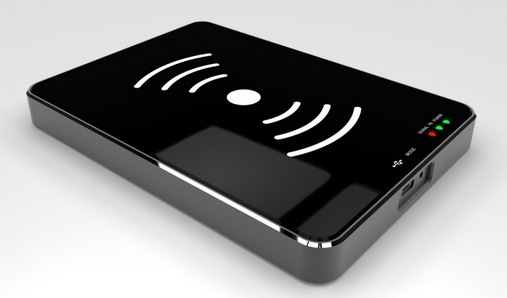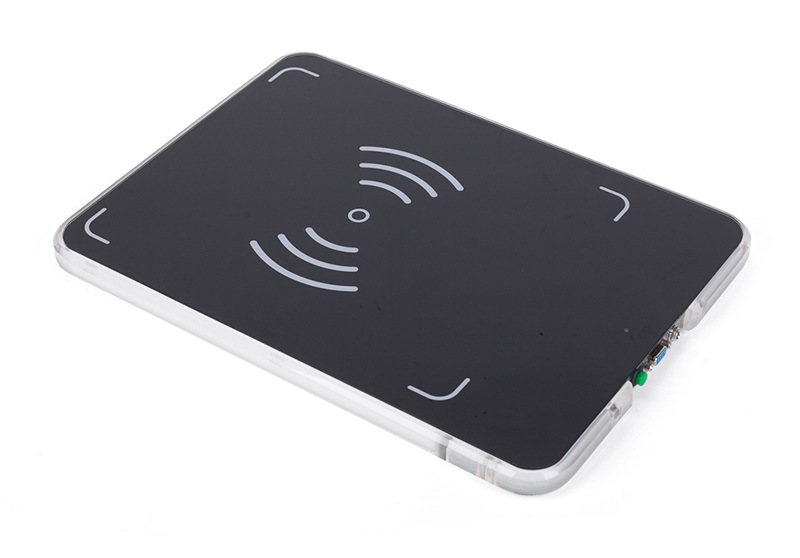
Using RFID asset tracking technology, you can keep track of and account for your tangible assets. You must affix the RFID tag to each of your tangible assets in order to use it efficiently. Then, they will send you signals to let you know where they are, when they will be doing maintenance, and how they are doing.
There are now a lot of places where marking objects is necessary. When selling in a store, you have to keep records and safeguard the merchandise from theft. Data from client maps is processed by hand and desk equipment in the trade complexes. Widely utilized SCADAs in business buildings are able to detect the employee’s chip signal. We shall discuss what an RFID tag reader (terminal) is, how it works, and the many types in this post.
Why is Asset Tracking So Important?
Maximizing return on investment is the primary objective of any firm. You must maximize each asset’s functionality in order to accomplish this.
Asset tracking helps simplify asset management logistics. Its computerized systems allow remote control of both mobile and fixed assets.
Other benefits of an effective asset tracking system include the following:
- This reduces administrative costs. By doing away with manual procedures, the asset monitoring system frees up time and resources for other revenue-generating endeavors.
- This leads to better customer service. A well-functioning system will make it easier to provide your clients with services quickly. Every asset flaw will be found and fixed before it affects the ability to provide services.
- Reduces losses. When your business has an effective asset tracking system, you will be confident of accountability. This prevents employees from misusing your assets, thereby optimizing performance.
- It increases organization and efficiency. Nothing makes your business more enjoyable than flawless logistics. You will be able to pinpoint the precise position of your asset if you have a strong asset monitoring system. You can utilize them when you need them, thanks to this guarantee.
The net effect of asset tracking is increased profitability. Your ability to account for your assets will be the main driver of your success.
The Components of the RFID Asset Tracking System
Instead of manually scanning the barcode, RFID employs electromagnetic fields to automatically identify and track items. The three primary components of this technology are RFID antennae, RFID tags, and RFID readers. Let’s quickly examine these RFID components to discover how asset tracking systems are made possible by them.
RFID tags are processed using readers.
Supermarkets use an infrared scanner that reads barcodes, which serve as labels. But it’s just an image, after all. For the machine to read it, it needs to be able to see it. An RFID tag is a chip that can transmit data through fabric or even the box’s walls. Examine the three varieties of this component, and we will comprehend the operation of the RFID reader:
- Active – they are made with batteries and environmental sensors. Send data even through metal. Distance reaches 100 m;
- Passive – more commonly found in regular shops. This chip has no power source. The reader transmits a signal, and with it and energy that feeds the mark. The range is 8-15 meters. Usually, a stationary computer on the cashier or the security console easily tracks the movement of each position;
- Semi-active – passive models with battery to increase power and stability.
Elements are implemented as cards, keyrings, self-adhesive stickers, labels, etc. Information on them can be overwritten a conditional infinite number of times. The data is stored on an ID card.
RFID readers
RFID reader is a device for processing radio frequency tags. Technically, it is a transmitter and receiver that sends a signal to the chip and receives information from it.
Look at the principle of operation and its features:
- Power source – battery or network;
- Microprocessor – it creates the radio wave of the necessary parameters, sending it to the mark;
- Antenna – not necessarily to support the device body to the chip. Sometimes it is enough to mount the antenna in the required place;
- Tag – it is marked goods, maps and so on.;
- Software – it is installed on your computer or in the reader, displaying data.
Working ranges of RFID readers
Like radios, these devices operate with different frequencies, from 125 kHz to 868 MHz. They directly affect the range. There are 3 types:
- LF is a low-frequency variant with a range of 125 and 134 kHz. It is the cheapest in the family and, therefore, the most common. The coverage area is limited to 10 cm – you need to carry the chip almost close;
- HF implies working in the high-frequency ranges. It is 13.56 MHz. Distance increases to 1 m. Applies option in payment systems, in buses and other transport, card-accepting, as well as in SDS;
- UHF assumes operation at ultra-high frequencies, 865-868 MHz. The range of exposure reaches 15 m. This technology is used in warehouses and logistics companies.
Can a single device support multiple bands? Yes. Manufacturers of modern models install 2-3 modules, making their product universal.
Execution Format
- Stationary: models designed to be placed on a floor, table, or other surface. produced as gates, vertical platforms, and even boxes. There are many different items in the European Union. They are constantly wired into the electrical grid for power. For data transmission, an Ethernet cable connection should also be available, or it should be made clear whether setting up a wireless network is possible. One location can have up to 16 antennas linked to it;
- Portable: These are terminals common in shopping malls and warehouses. They work from batteries. It may seem that they are only capable of operating in the LF range, but this is not the case. Here, we have a full-fledged space scanner, covering large areas and transmitting information via wireless communication. In the same warehouses, the handheld device allows both to flood certain items and to receive data at once on all objects located within the range. Modern models work up to 8 hours without charging.
Advantages of RFID Technologies over Traditional Barcode Systems
Conventional barcode methods might be laborious. requires a worker to transmit a barcode to the scanner in order to obtain data. When the barcode is closed or removed, things get complex! The information is not captured by the barcode reader in this instance. As a result, the employee would have to manually enter the serial number, which is time-consuming and error-prone.
On the contrary, RFID tags are very effective and easy to apply. The RFID reader decodes the information in the tag without being in a direct line of sight, guaranteeing accuracy and convenience.
Here are some other benefits you will get when using RFID reading compared to the traditional barcode system:
- Read multiple tags at once. RFID technology does not require the reader and the reader to be visible. Thus, one employee can track all your assets in minutes!
- Easily integrated with GPS software and technology. With RFID, you can access all information about your assets on your mobile phone. It can get the exact location of your object in seconds
- Data Warehouse. RFID tracking technology allows you to store important information about your assets. This allows you to create accurate management schedules, increasing productivity in your organization.
- It sends alerts in real-time. Using an RFID tracking system guarantees the security of your assets. It sends alerts in real-time if assets move outside of the permitted zones.
- Reduce inventory time. With this technology, inventory management is easy! This takes several hours rather than days when using other traditional tracking systems.
Shutting the Loop: How RFID Transforms Asset Monitoring
RFID technology is viewed as a game-changer in the rapidly evolving asset management industry. It turns an intricate and error-prone task into a straightforward and precise process. Businesses may increase the efficiency of their asset tracking systems, save costs, and streamline procedures by implementing RFID technology. The limitations of conventional barcode systems are removed by RFID, enabling real-time tracking, accurate data collection, and simple integration with GPS and other contemporary technologies.
RFID asset tracking becomes an indispensable tool for firms looking to boost their return on investment. It not only safeguards your assets but also propels your business toward greater success and profits. Using RFID technology means taking the lead in a future where all assets are tracked, all procedures are optimized, and all opportunities are boldly pursued. It goes beyond simply following the latest trends.

